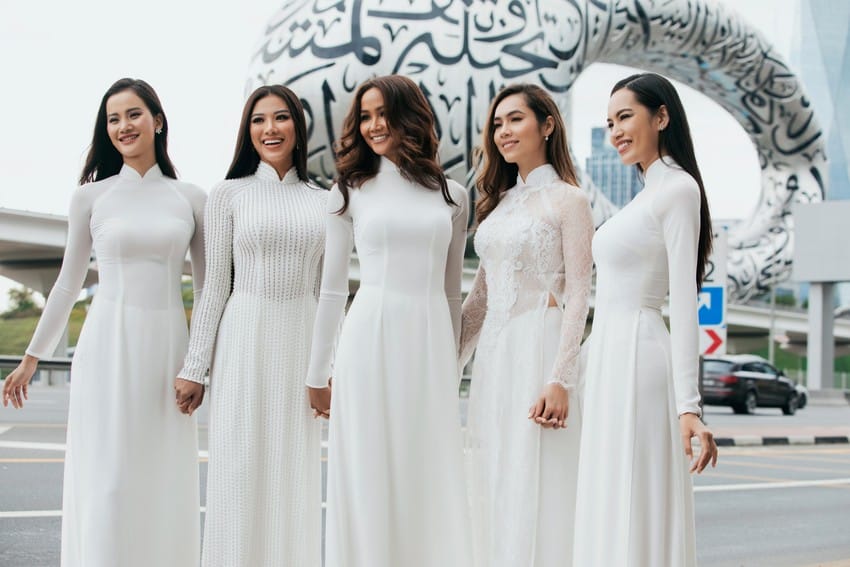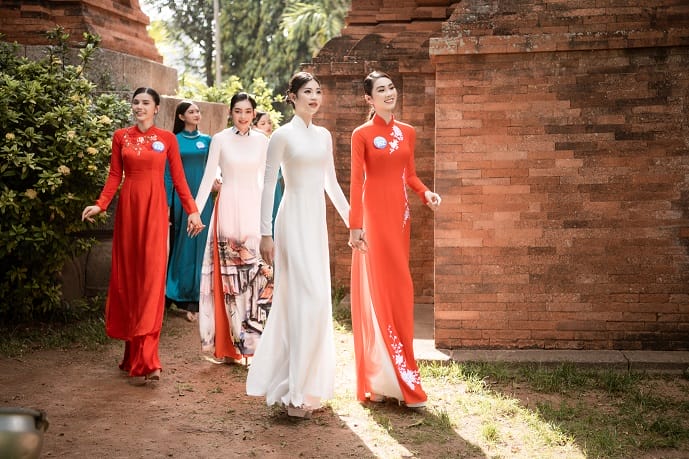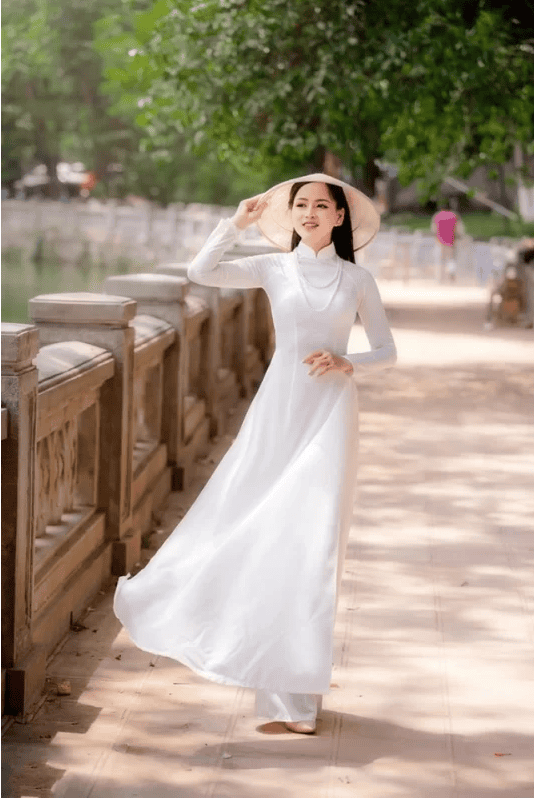The history of Vietnamese Ao Dai
If Korea has its hanbok, Japan its kimono, Scotland its plaid skirt, etc., then Vietnam is famous for its slim traditional Ao dai. The word "Ao Dai" has been included in the Oxford Dictionary and is interpreted as Vietnamese women's clothing, while also specifically describing its design.
So far, the origin of Vietnamese Ao Dai has not been determined, but based on the glorious history of the Vietnamese nation, the conclusions made by various researchers emphasize that this national costume appeared thousands of years ago.

Cross-collar clothing is the oldest image of Vietnamese Ao Dai, appearing around 1744. At this time, the Ao Dai is large in size, sewn with 4 pieces of fabric, length to the heel, side slits, long sleeves, and wide hand sleeves. Ao Dai is combined with a black skirt and a cotton belt is used outside.
In the 17th century, in order to bring convenience to work and life, the design of Jiaoling Ao Dai was reduced to four legs, which was in line with the living and working conditions of farmers.

In the 19th century, the five-body jacket appeared to distinguish the aristocracy from the peasantry.
By the 20th century, Lemur Ao Dai was born. In the 1930s, Ruan Jixiang, the most famous designer and writer at the time, got inspiration from Paris fashion and designed a series of Ao Dai with strong French style such as bright colors, discounted shoulders, round low collar, and waistcoat tailoring. Use European accessories such as shoulder pads, sleeves, lace, and tassels. Another designer, LePho, also continued this tailored style and established the basic style of modern Vietnamese Ao Dai.

In the 1950s, two Vietnamese fashion designers changed the part from the neckline to the armpits to a 45-degree raglan sleeve design to avoid creases when the arms move. They also made the trousers close to the hips and wide-legged. The bevel cut design is still used today.
After 1954, North and South Vietnam entered a period of division. Under the influence of American culture, collarless Ao Dai began to appear in southern Vietnam.
It was not until Vietnam's "reform and opening up" in 1986 that the Vietnamese government began to promote Ao dai again, and Ao dai became popular again and became the standard uniform for female civil servants, hotel receptionists, news anchors, airline flight attendants, and high school girls.
The Vietnamese government encourages women to wear the national dress on formal occasions. For example, red is commonly worn during the Spring Festival, black is worn at funerals, and pink is the best color for weddings. The female uniforms in universities and middle schools are designated as white national uniforms to symbolize the purity of girls (so on the streets of Ho Chi Minh City, you often encounter female students wearing traditional clothes. When it is time to go to school or after school, the streets Groups of white "Ao Dai" are swaying on the skirt, which is very eye-catching) and during their graduation ceremony, they can change into brightly colored national uniforms to symbolize their maturity, which is somewhat similar to kimonos. The work clothes of Vietnam Airlines flight attendants are also designed in the style of "Ao Dai". Generally speaking, dark-colored national clothes are more suitable for middle-aged women, while light-colored or white ones are suitable for young girls.
#Aodai
#Vietnam
#Ethnic
#Women
#National Service
It turns out @Times Vietnam Friendly Organizations Federation Forum

















